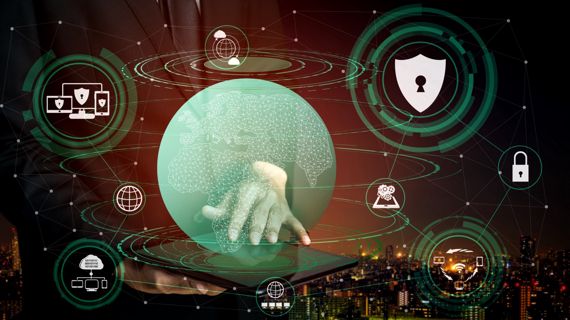Navigating the 2023 State of Operational Technology and Cybersecurity

In the rapidly evolving landscape of technology, the interplay between operational technology (OT) and cybersecurity has become more critical than ever. As we delve into the heart of 2023, it's evident that the fusion of these domains is reshaping industries, driving innovation, and presenting new challenges that demand attention. This blog explores the state of operational technology and cybersecurity in 2023, highlighting key trends, opportunities, and the imperative need for robust security measures.
Operational Technology's Evolution:
Operational technology, which includes industrial control systems (ICS) and supervisory control and data acquisition (SCADA) systems, has undergone a remarkable transformation. The blending of the Internet of Things (IoT), data analysis, and automation has introduced a new era of increased efficiency, productivity, and connectivity in industries like manufacturing, energy, and transportation. However, this convergence also exposes these critical systems to cybersecurity threats that were once distant concerns.
Rise of Cybersecurity Concerns:
The fusion of OT and IT (information technology) networks creates a complex environment that demands comprehensive cybersecurity strategies. The escalating frequency and sophistication of cyberattacks targeting operational technology have highlighted vulnerabilities that were previously underestimated. The interconnectivity that powers modern industries can also amplify the impact of breaches, making the safeguarding of these systems a top priority.
Trends Shaping 2023:
Converged Security Solutions: Organizations are increasingly adopting holistic security solutions that bridge the gap between IT and OT. This convergence not only enhances threat detection but also facilitates rapid response to potential breaches.
AI and Machine Learning in OT Security: Artificial intelligence and machine learning are being harnessed to detect anomalies, predict potential threats, and optimize system performance. These technologies enable real-time analysis of vast data streams, empowering organizations to respond proactively to security incidents.
Zero Trust Architecture: The zero-trust model, emphasizing strict identity verification for every user and device, is gaining traction in the OT realm. This approach ensures that access is granted based on verified identity, regardless of location, fostering a more secure operational environment.
Supply Chain Security: As organizations continue to rely on complex supply chains, securing every link becomes paramount. Cyberattacks on suppliers can lead to cascading disruptions. Hence, vetting and securing third-party partners are critical components of a comprehensive cybersecurity strategy.
Challenges and Opportunities:
While the convergence of OT and cybersecurity offers transformative potential, it's not without its challenges. Legacy systems often lack the built-in security measures of modern solutions, necessitating costly upgrades. Moreover, the shortage of skilled professionals adept in OT and cybersecurity presents a hurdle.
However, with challenges come opportunities. Organizations that invest in robust cybersecurity measures can enjoy a competitive advantage by ensuring the continuity of operations and safeguarding sensitive data. The integration of cutting-edge technologies like blockchain can enhance transparency and data integrity, which are crucial in industries like pharmaceuticals and food supply chains.
The Imperative of Collaboration:
Addressing the complex landscape of OT and cybersecurity requires a collaborative approach. Governments, industries, and security experts must work in tandem to establish standards, guidelines, and best practices that enhance the security posture across sectors. Information sharing, threat intelligence, and joint research initiatives can bolster the collective defense against evolving threats.
Conclusion:
As we stand at the crossroads of 2023, the combination of innovation, challenges, and collaborative efforts defines the state of operational technology and cybersecurity. Embracing the opportunities presented by the fusion of OT and IT while remaining steadfast in fortifying our defenses against cyber threats will be instrumental in shaping the future of industries worldwide. In this ever-changing environment, the foundations of a secure digital future will rely on resilience, adaptability, and a proactive approach to cybersecurity.
0 comments
Be the first to comment!
This post is waiting for your feedback.
Share your thoughts and join the conversation.
